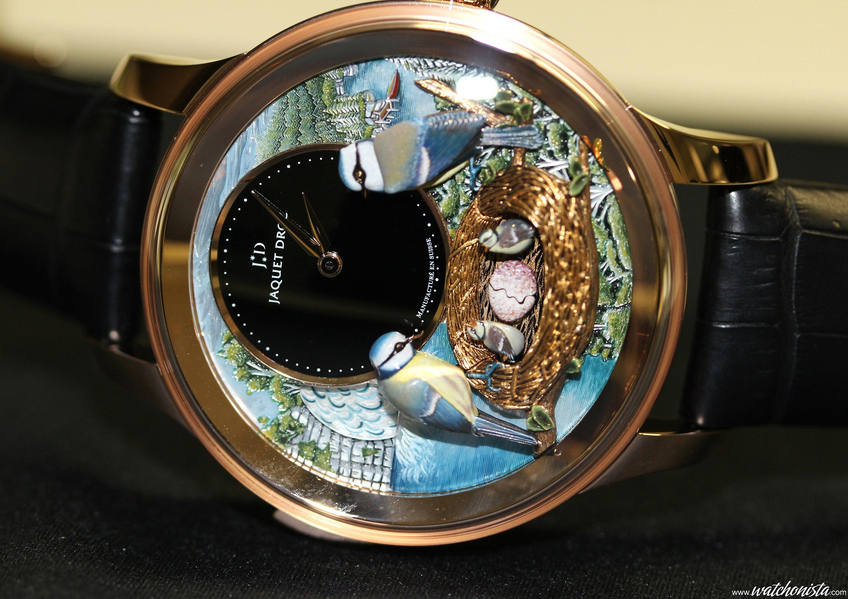

Jaquet-Droz The Bird Repeater
Pierre Jaquet-Droz' mechanical work focused on two main themes: automatons and birds. If the androids presented during the Automates & Merveilles exhibition are the most popular, the majority of those built by Jaquet-Droz during this period were automatons staging superb birds, sometimes adorned with real feathers and often whistling.
So, birds were Pierre Jaquet-Droz's automaton demonstration key thread in the courts of European kings. These watches or these automatons staging birds were also the main product Jaquet-Droz exported towards China, already. He was a precursor in many regards, technical, commercial and marketing. Today, the brand Jaquet-Droz presents a key watch in its new history, a synthesis of its glorious past, technical as well as of scenographic.
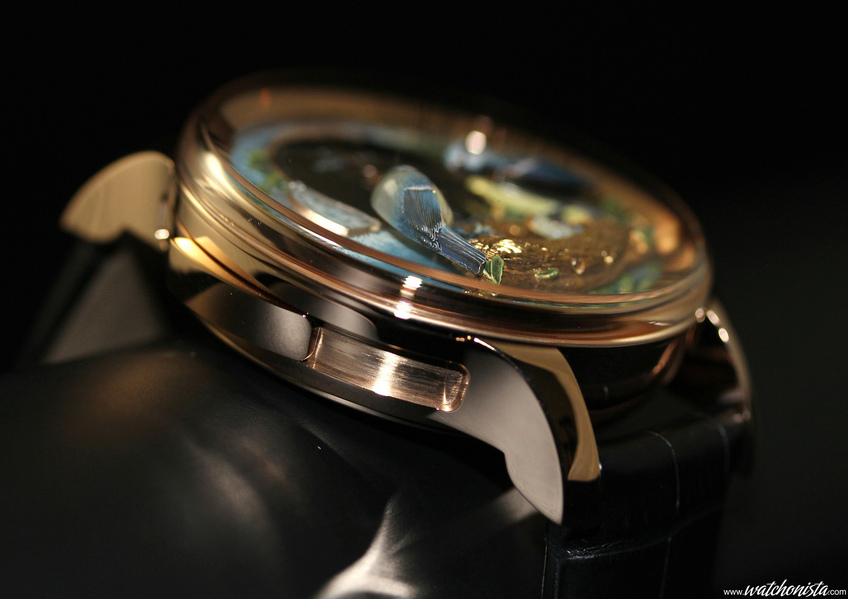
With the excessive watchmaking, the "Show off" watch concept had never been so vibrant. And one notices that the more a watch is demonstrative, the less it is wearable. Besides the problem of wearability, there is the problem of legitimacy. The Romand watchmaking culture, with its Calvinist origins, indeed represents the opposite of demonstrative. Patek Philippe is the ultimate example: between the tourbillons with completely closed dials or the Henry Graves collection, great complications have never been so discretely cased-up.
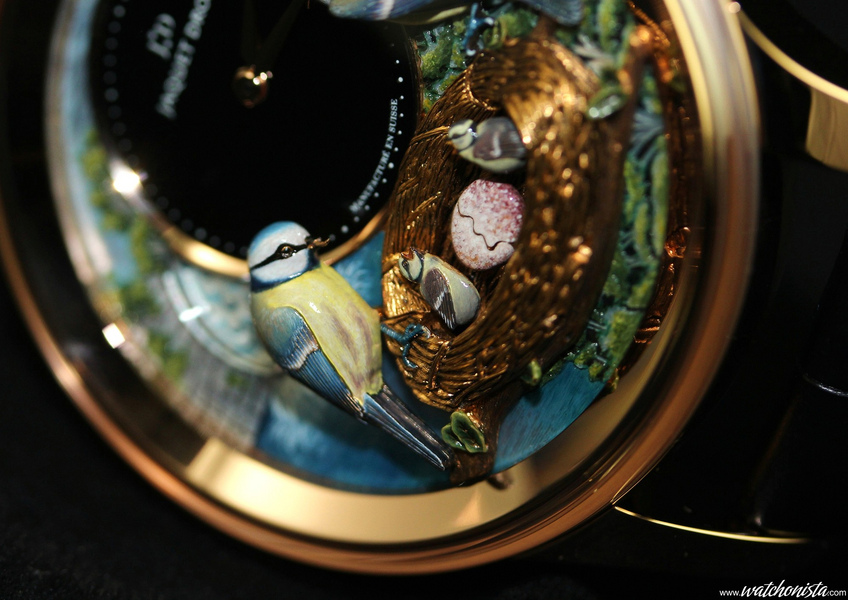
Jaquet-Droz's internal problem is the opposite. The designs are unanimously recognized in the blogosphere, but a brand needs to produce more than attractive designs if it wants to become a great actor in the upper market...
For example, Lange reached its cruising speed with the Datograph.
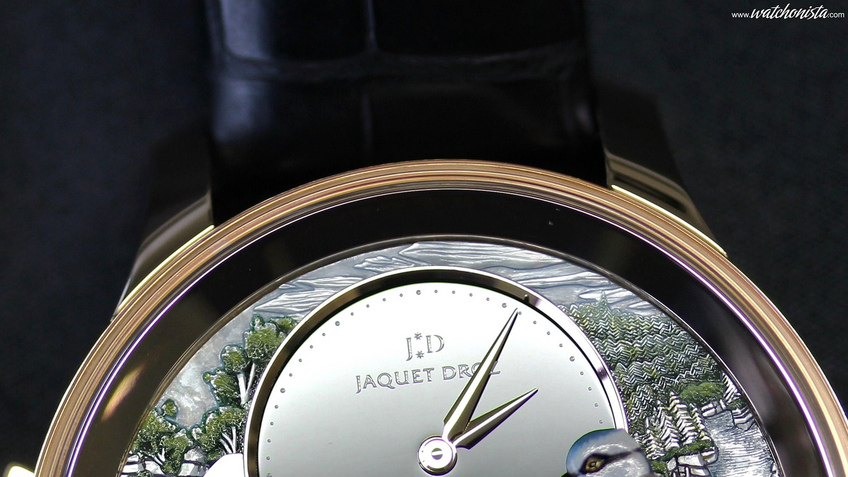
This complication of singing birds thus corresponds to a critical stage, as much in the modern history of Jaquet-Droz, as in the saga of demonstrative watches. This automaton scenography only required thirty months of development, which is little seeing the complexity of the project. Jaquet-Droz collaborators were eager to demonstrate their savoir-faire in automaton complications and complex dial making. To get out of the trap of excess watches, one had to create a beautiful piece, one that is both wearable and meaningful. With this "Bird Repeater", we therefore end up at the convergence of demonstrations.
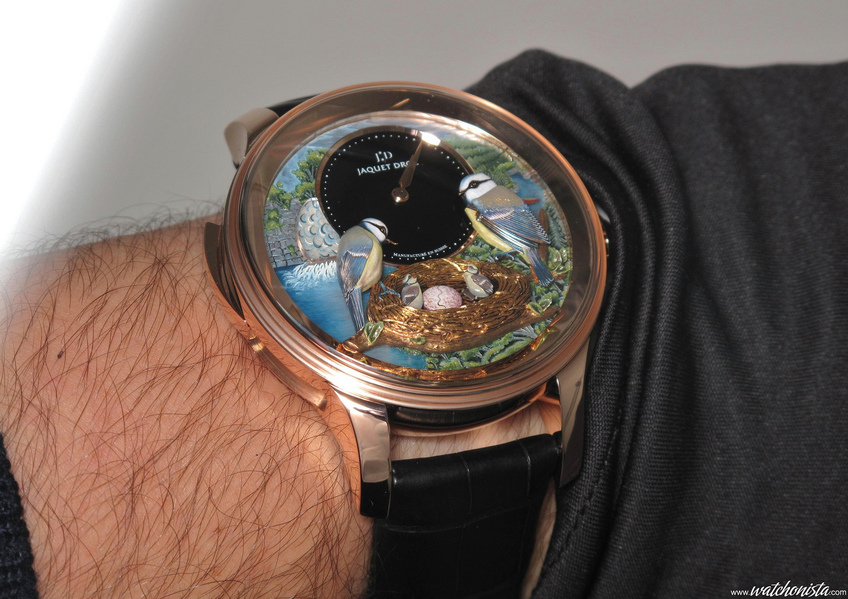
For watch lovers, history is an essential factor. As you may have read in the topic "Automates & Merveilles", Pierre Jaquet Droz demonstrated his art in the grand Courts of Europe. The Androids might have been sold multiple times over, and at astronomical prices, insofar as they represented the pinnacle of the XVIIIth century technology. Yet, PJD always refused. As a good businessman, he inaugurated the modern concept of "talking pieces".
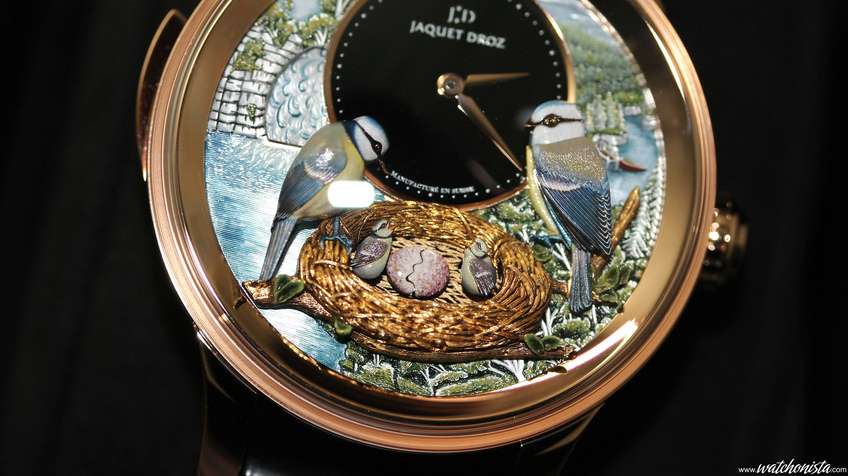
This watch is therefore the most legitimate avatar of the premiere talking pieces. Why?
The watch is 47mm by 18 (with the domed crystal) which, to give you an idea, somewhat correspond to the dimensions of a Panerai. The similarity stops there. Before revisiting the watchcase and its metal, let's discuss the high point of this piece, its dial that revolutionizes tridimensional watchmaking. Up until now, 3D watchmaking spun around two heavy trends: pieces with super modern or even Cyberpunk looks and watches with tridimensional details or mobile parts linked to the hour display or to the escapement. The revolution brought about by these Bird Repeaters is, on the one hand that the aesthetic is to be conjugated in the more-than-vintage tense, and on the other hand that these automatons are only marginally linked to the hour display; indeed, these blue tit bird work together with the minute repeater and are powered by its complication spring.
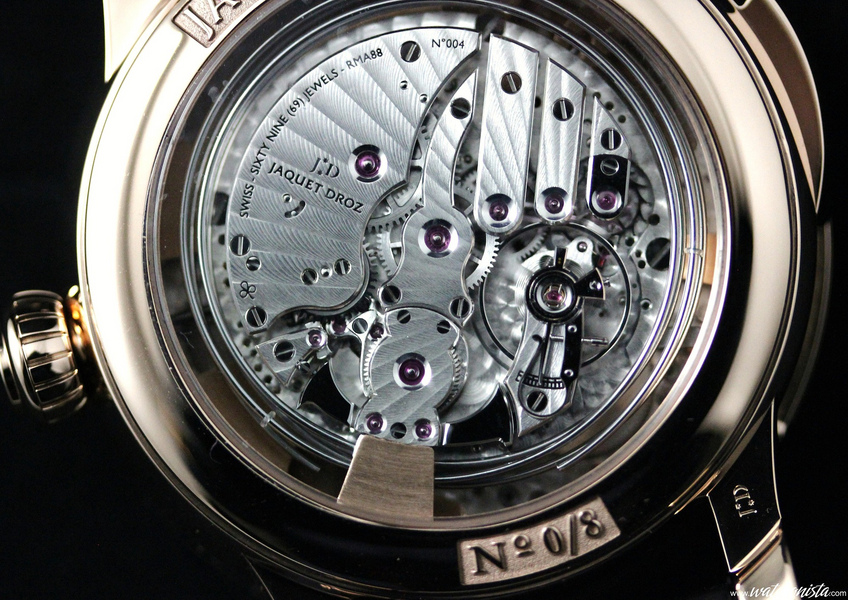
The repeater starts in a classic way, through the lateral bolt; but besides launching the repeater, the sequence also animates the birds in an impressive ballet.
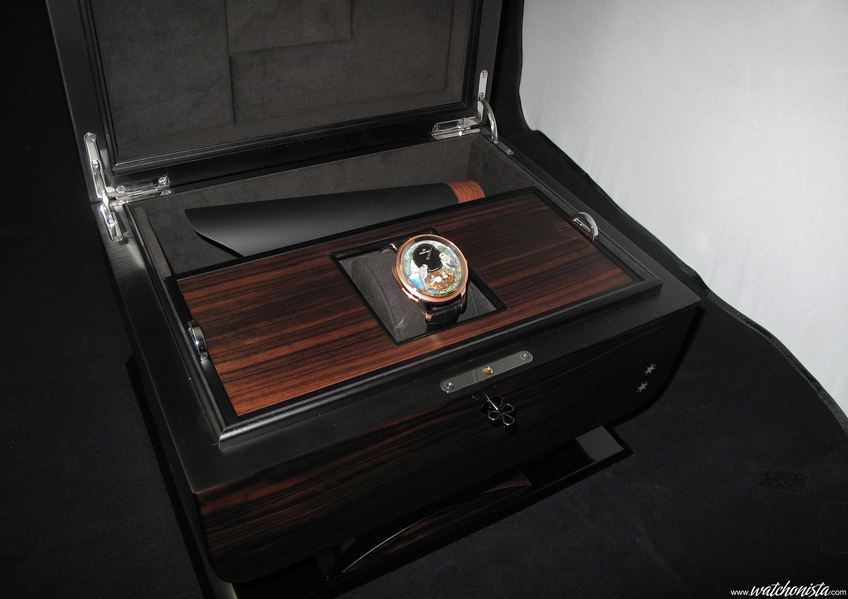
The scene represented on the dial takes place before the Saut du Doubs, a 27 meter waterfall located on the Swiss-French border. The Doubs is a mythical river which crosses the ancient manufacturing areas of the French Jura and the still active watchmaking regions of the Confederacy.
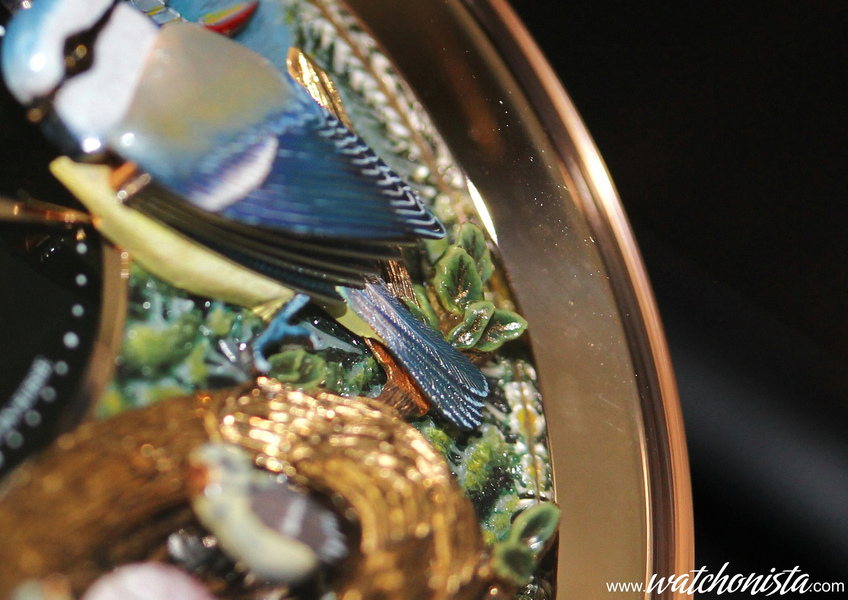
As the repetition occurs, eight animations will start one after the other:
1) the Saut du Doubs waterfall, which serves as the operation indicator (powered by the main barrel).
2-3) the male will deploy its wings and move its head.
4) the female will feed the young birds a worm.
5-6) both young birds will move independently
7-8) finally, the most magical animation: the egg will crack open to reveal a young bird.
This last sequence is the most marvelous and the most surprising, because at first it is almost impossible to see that the egg features an opening... And this hatching gives life to... The overall scene!
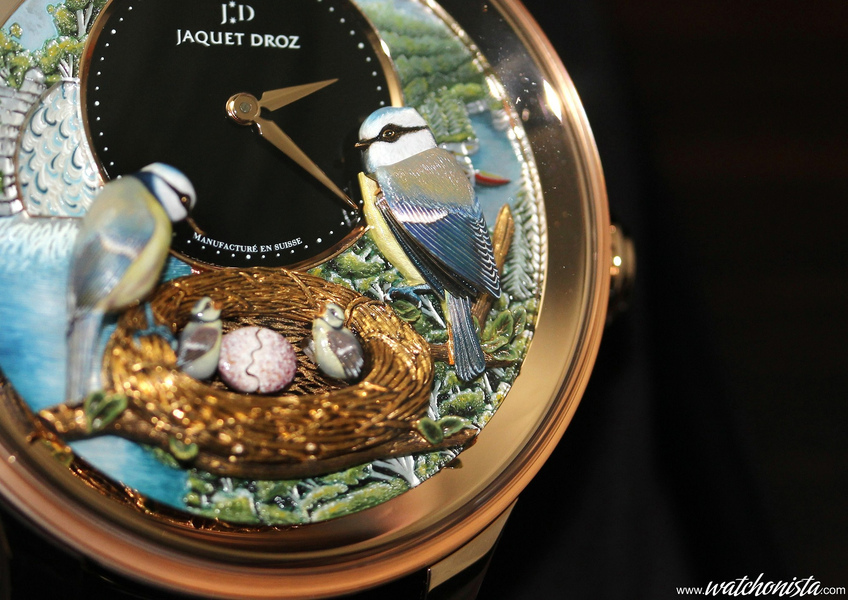
There is an image, but also a sound: it rings and it even rings loudly, the double "cathedral" timbre, developed by Christophe Claret on a Breguet layout, works wonders. The movement makes around 12.5 lines across by 8.8 mm in thickness and is set at 18.000v/h with a 48-hour power reserve. I worried that this repeater with automaton might fall into the usual trap of these types of complications: A mechanical masterpiece completely hindered by a tiny animation and a barely audible sound.
With this "Bird Repeater" it is absolutely not the case, it sustains the expected dramatization. One of the mistakes of actors in training is to speak in an inaudible voice: with a voice from the throat instead of a voice from the belly. They don't "sustain" enough.
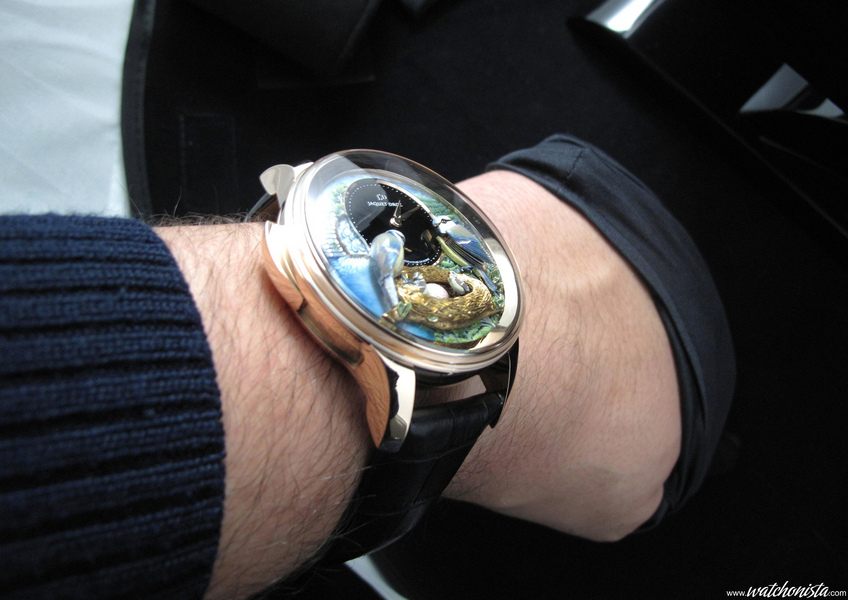
These birds would have made perfect leading actors in a theater course. They sustain correspondingly to the price of the complication. One gets what one pays for at 450 kchf (most of the 2*8 watches that will be produced + the #0 demonstration piece have already been sold). Even with several guests and background noise, everybody will be able to hear the piece ringing! If minute-repeaters already exist on the market, there is nothing that can compare. The gap between what exists and this "Bird Repeater" is commensurate to the difference between a Walkman from the 80's and a philharmonic opera...
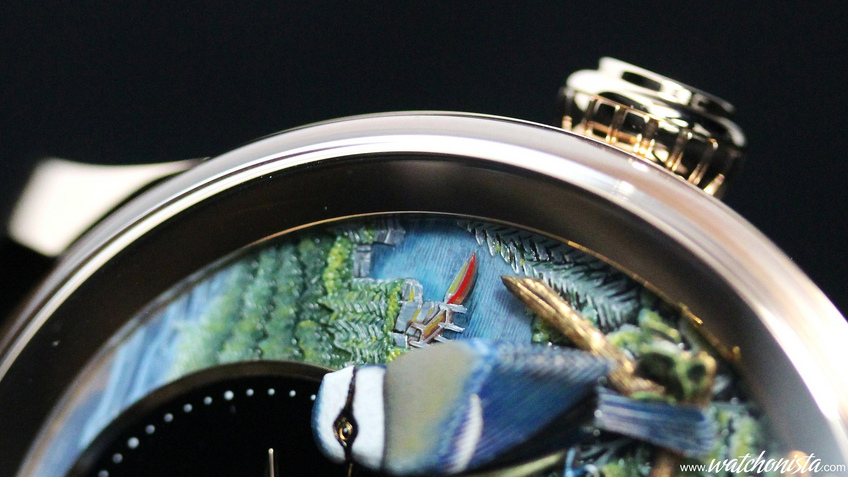
Initially, one could worry that gold would be an obstacle for the sound diffusion. But contrary to an urban legend, it is not the case. Indeed, pure gold transmits sound very poorly, because it insulates too efficiently; from this point of view, iron or titanium are better than pure gold. But when one talks about alloys, steel is not as good as 18 carat gold (750/1000 of the total in gold). As one too often forgets that in 18 carat, gold makes up only 60% of the volume, the rest comprising of metals less dense, thus more voluminous: silver, palladium and copper! In particular, copper has interesting properties for music-lovers, as the bronze bells can testify.
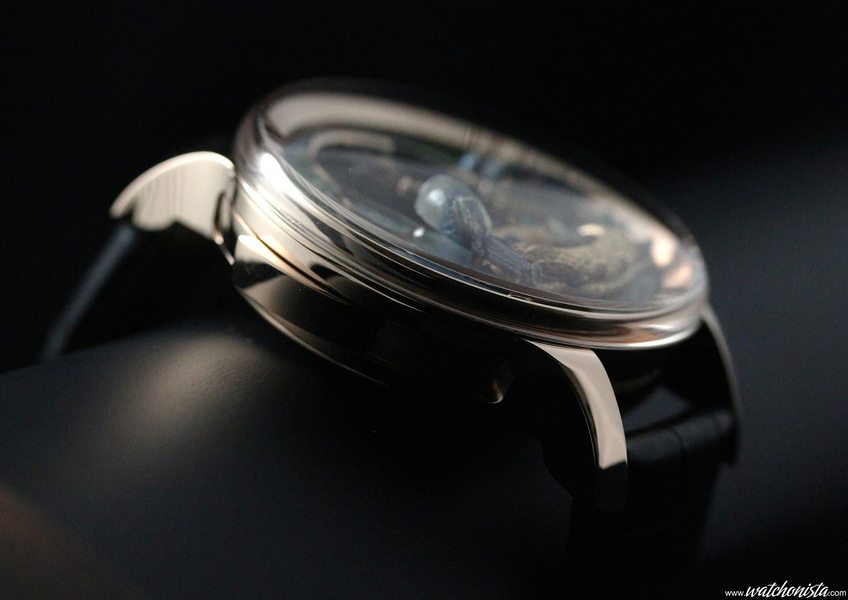
Keeping in this logic of dramatization, the watch comes with a resonator made from "bois de la vallée." Both this accessory and the magnificent little box put you into the skin of Pierre Jaquet Droz on tour with the nobles of Europe. You will become an ambassador for the brand with your Court of friends. This "Bird Repeater" is therefore more than a means to keep the brand alive, it's a new way to create a fan base, or the happy owner of this piece has the means "keys in hand" to share his or her passion with friends in an ultra-demonstrative way.
No need to kill your company with technique, or aesthetic subtleties, even the layman can understand the obvious prowess that this automaton ballet represents.
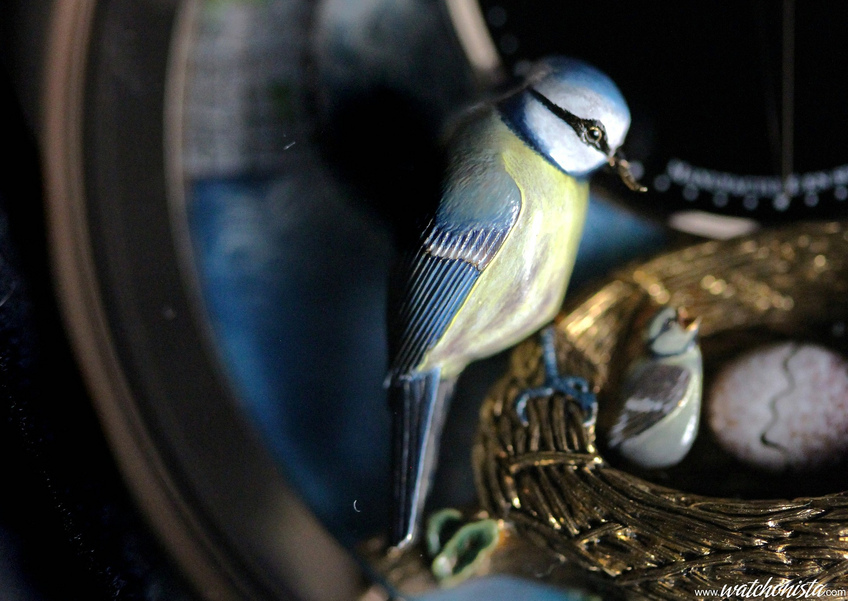
It is undoubtedly the key strength of this piece; it is sufficiently playful and dramatic to appeal to everyone from the most critical audience, the experienced collector, to the person who has never worn a watch.
Everyone can appropriate this magic depending upon one's level of horologic culture. Here, the technique and the aesthetic don't exist in of themselves (as is found in many of the grand complications); they totally support a scenography for all to wear.
Another characteristic quite unique for a watch this complex and demonstrative is that it is quite wearable for everyday use. Without being particularly discrete, the casing is well designed and its weight is sufficiently contained so as not to become an attractive nuisance. The casing design is very classic (and efficient) and the watch is imposing without being too big.
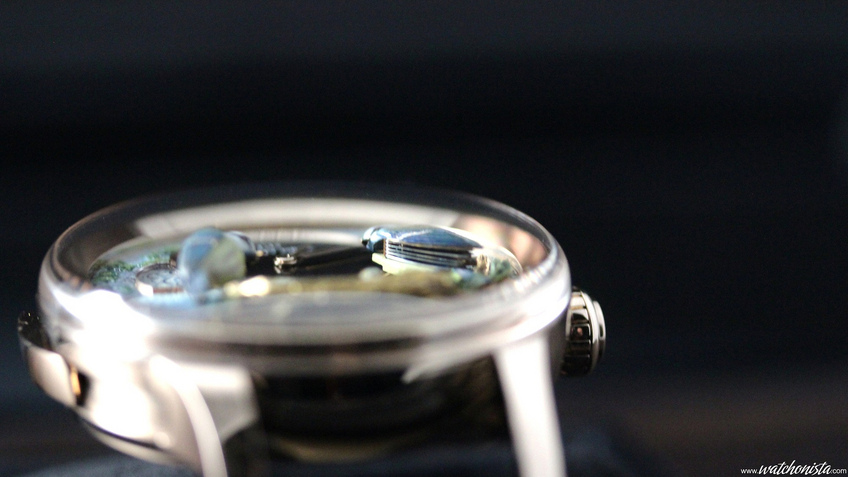
What is quite surprising is the gigantic opening of the dial, which takes up almost entirely the 47mm of the case.
Thankfully the dial is not white; it comprises multiple levels of finishes (depicted in gold and Polynesian lacquered enamel) which nicely occupy the space. Visually, there are five principal parts: the hour sub-dial, in onyx, the gold nest, the background representing the "Saut du Doubs" waterfall and the two tit bird; to best respect the theme, these birds are blue like the background which is almost a shame, as they lack contrast; with more striking colors (blue birds, orange background) the animations would have had even more of an impact. What the dial loses in contrast, it gains in realism: everything is replicated with the meticulousness of a biologist, as even the rowboat that we can see at 3 o'clock is a replica of an existing row boat. This desire to replicate nature is of course a type of homage to the end of the XVIIIth century art and the way in which people during that era represented their environment. Their work was mostly figurative, as photography had not yet made its mark.
This "Bird Repeater" is therefore not only a big step in the history of the new Jaquet Droz manufactory, but also a step, more modest perhaps, in the history of watchmaking.
It is the first time that a watchmaking house authors a timepiece that is able to coherently reconcile elements that we thought irremediably incompatible.
